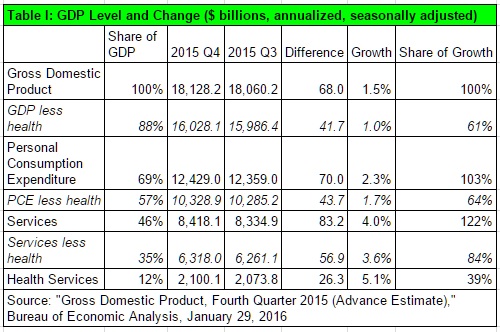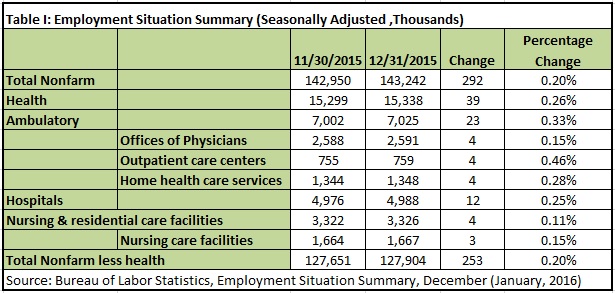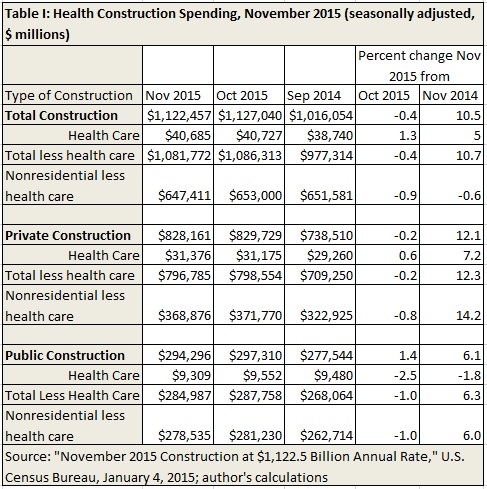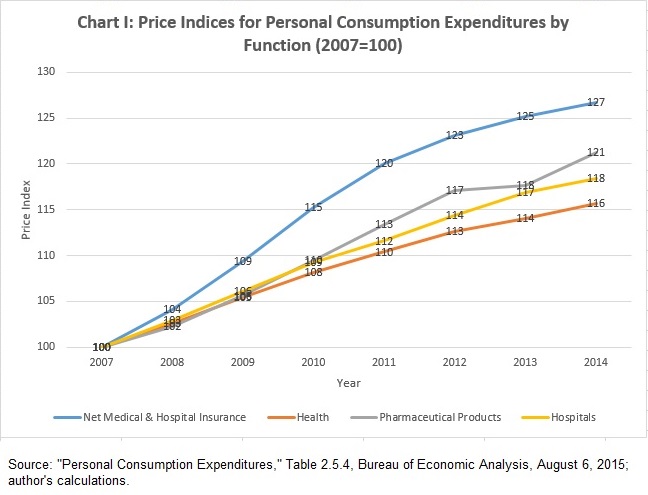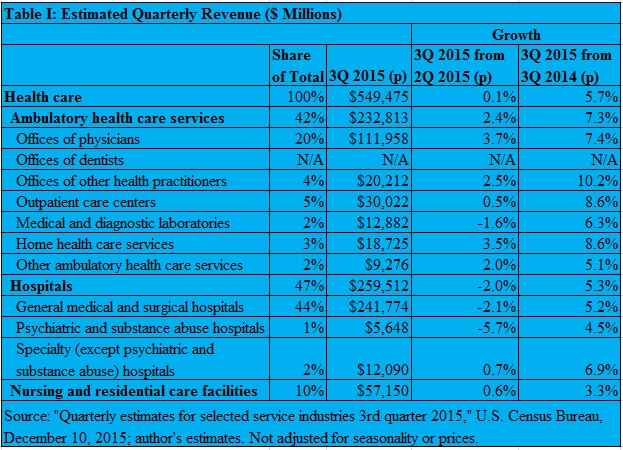GDP: Health Services Are 39 Percent of Growth
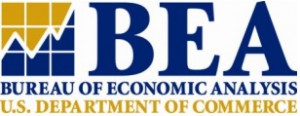 Today’s advance release of Q4 GDP showed the production of goods actually shrank in the fourth quarter. As a result, the (annualized) $26.3 billion growth in health services spending accounted for 39 percent of GDP growth of $68.0 billion. It comprised 32 percent of services spending growth and 38 percent of growth in personal consumption expenditure (Table I). This means that health services spending continues to devour more of our budgets. The evidence continues to indicate Obamacare is not bending the cost curve.
Today’s advance release of Q4 GDP showed the production of goods actually shrank in the fourth quarter. As a result, the (annualized) $26.3 billion growth in health services spending accounted for 39 percent of GDP growth of $68.0 billion. It comprised 32 percent of services spending growth and 38 percent of growth in personal consumption expenditure (Table I). This means that health services spending continues to devour more of our budgets. The evidence continues to indicate Obamacare is not bending the cost curve.
